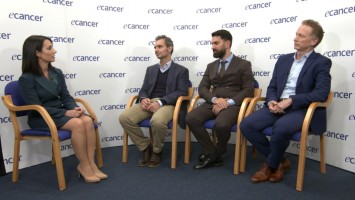In short, one could say that since the cure rate of childhood leukaemia has now gone beyond 90% the risk of dying from the toxicity now equals the risk of dying from the leukaemia itself. So if we want to improve the survival of these patients we need to address the toxicity issue, so that’s one part. The second is that more than half of the patients that we cure will be burdened by one or more serious toxicities that clearly jeopardises the patient’s quality of life. So we have an obligation now not just to cure the patient but to ensure that the patient can live more or less a normal life subsequently. So that’s why the focus on late effects has become even more important today as it was previously.
Why is there such an issue with long-term toxicities?
The main reason is that the anti-cancer agents that we are using to cure the patient, they date back from the ‘50s and ‘60s and ‘70s and they are rather unspecific. So they don’t just hit the leukaemia itself, they basically affect every organ in our body. It’s much more difficult to predict the response to the liver or to the bone or to the brain than to predict the response to the leukemic cells, because we can grow the leukemic cells in the lab and test their sensitivity but when it comes to the other organs we really don’t know for the individual patient whether this patient will be affected by any of these toxicities. So the problem is that until now we almost exclusively have been using non-targeted therapy.
How are these toxicities being addressed?
There are basically two ways we try to address that. One way is a better stratification of patients which means that a number of patients for whom we can predict that the risk of relapse is very low, we can allocate these patients to a low risk group where they don’t get so extensively exposed to organ damaging drugs. So that’s one way – simply take the whole group of patients and downgrade them.
The other way is to understand that patients differ in their pharmacology so some patients will have a different drug disposition and we may adapt a therapy for these patients. That’s an activity that, for the first drug, is already today implemented in many protocols.
The third thing is that we try to understand why patients are more sensitive. This is nothing to do with the tumour, this is something to do with their germline DNA. So because we are different in the way we handle the drug the way our organs respond to the therapy will be different. We are not there yet but the hope is that within a certain number of years, as more and more patients have their germline DNA mapped, we can predict who has a very high risk and we may sometimes simply take the drug away for that patient or replace it with something else. So these are the main lines that the majority of the groups are working with.
Then, of course, the introduction of much more targeted therapy that hits very specific molecular pathways will be one way forward. Because then we will have a specific toxicity linked to that molecular target but many of you could say those off-target toxicities that we see today can be reduced.
What targeted therapies are currently available?
If we talk about the targeted therapy that is routinely used, these are the tyrosine kinase inhibitors used for Philadelphia positive or Philadelphia-like leukaemia that have been on the stage now for many, many years. We have a pretty good understanding on what is the long-term toxicity with these drugs if you are extensively exposed. Then we have the B-cell targeted therapy and that is, of course, both the antibodies targeting CD19 or CD22. We know it causes B-cell aplasia so you are at risk of getting infections but that can be compensated for by giving the patients immunoglobulin. So that’s relatively simple.
Then, of course, you have the therapy that tried to link our immune system with the leukemic cells, like the bispecific antibodies like blinatumomab or the CAR T-cell therapy. So it’s basically the same principle – taking the T-cells and engaging them in the leukemic cells. Extremely effective, they may have some very acute toxicities; whether they will turn into long-term toxicities if we look five and ten years ahead we, of course, don’t know today. But these drugs, or these treatment strategies, have been introduced partly to increase the cure rate but also partly to reduce toxicities.
What developments do you think will happen in the near future?
I don’t think that if we take this talk five years from now we’ll have seen the major changes. That is because when protocols are initiated, we just initiated a new European protocol across 14 countries, this will run for the next six or seven years so nothing will change during that therapy. But there will be studies integrated in these protocols that will learn us novel things that then can be integrated in the next generation.
So I think the major change is that the activities on getting a much better understanding on how we should address the toxicities that will emerge, the understanding of the host genome in how that influences the risk of toxicities for the individual patient, that will develop vastly in the coming years. Then a number of groups will, for their very high risk patients or for their relapsed or resistant patients, start using these novel agents. Of course, that will pave the way for integrating these treatment strategies into first line therapy.








